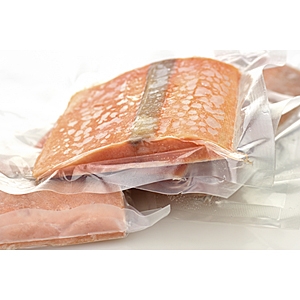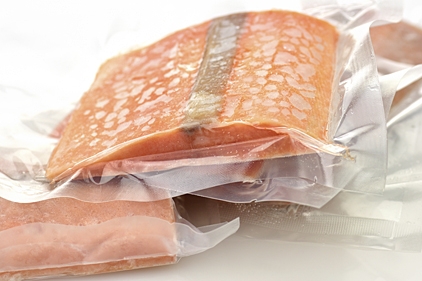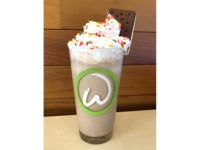In honor of National Frozen Food Month, Plastics Make it Possible recognized innovations in plastics that help deliver convenient and nutritious frozen foods,  particularly those creations that have led to less packaging and food waste.
particularly those creations that have led to less packaging and food waste.
Frozen food packaging has changed dramatically since the 1920s when Clarence Birdseye developed methods for quick freezing foods. While frozen foods today are packaged in many materials, technological advances coupled with the rise of the microwave have made plastics the go-to choice for many frozen foods, from vegetable medleys to ready-to-heat meals to gourmet ice cream.
"By helping preserve fresh flavors and nutrients in frozen foods, plastic packaging often leads to less food waste," says Steve Russell, vice president of plastics for Washington, D.C.-based American Chemistry Council, which sponsors the Plastics Make it Possible initiative. "And thin, lightweight plastic packaging also leads to less packaging waste. So, consumers can save more food and grocery money and create less waste."
For example, many frozen ready-to-heat meals such as stir-fries now are packaged in thin, lightweight plastics that help preserve freshness. Consumers can create quick and easy meals using minimalist packaging that can be scrunched up to about the size of a poker chip. Some examples of how plastics have contributed to the evolution of frozen foods:
Freezer-to-microwave TV dinners. In the early days of frozen TV dinners, meals could take an hour to heat in the oven. But, with the advent of the microwave oven, frozen food makers began packaging frozen meals on trays made with plastics that could stand up to both cold and heat. Dinners now can go from freezer to microwave and be prepared in minutes, requiring less preparation time and energy. And, a growing number of U.S. communities collect these trays for recycling, resulting in less valuable materials in landfills.
Airtight freezer foods. Under-protected food stored in the freezer absorbs nasty odors and flavors and then dries out, resulting in "freezer burn" and wasted food. Factory-sealed plastic bags and containers help preserve the flavor, texture and nutrients of food by locking out air. So, consumers can enjoy nutritious fruits and vegetables year-round, buy wild-caught salmon from Alaska and find all sorts of prepared meals that were unavailable only a few years ago, packaged in thin, lightweight plastics.
Plastic steamer bags. Many frozen food makers now sell a large variety of side and main dishes in lightweight plastic pouches designed for heating in the microwave. Consumers simply place the frozen package in the microwave, and moisture steams the food inside the plastic pouch, in one simple step with less cleanup and little waste. Consumers themselves also can buy similarly designed plastic zipper bags to easily and quickly steam their own meals in the microwave.
"Active" packaging. Sometimes called "intelligent" or "smart" packaging, active packaging helps protect both fresh and frozen food by doing more than simply containing it. For example, antimicrobials can be incorporated into the plastics used in packaging; this can help mitigate the growth of harmful microorganisms, which helps preserve food quality and results in less spoilage and waste.
Recycled plastic packaging. Thanks to new recycling technologies, some frozen food makers are using recycled plastics in their packaging. One major frozen food maker uses plastics from recycled plastic bottles in frozen meal trays for several of its food brands; the company says this diverts an estimated 8 million plastic bottles from landfills annually. And of course these plastic trays are lightweight, which reduces fuel consumption in transport.
Do-it-yourself frozen foods. Just what did we do before handy plastic zipper bags? Today's consumers can place homemade meals, store-bought foods and leftovers in zipper bags and purge much of the air before freezing (pre-wrapping foods in plastic stretch wrap also helps). To take this concept even further, home vacuum sealers remove nearly all air from the plastic bag prior to sealing, which better protects food to reduce waste. Home vacuum sealing with plastics has grown considerably in recent years; it's particularly popular with warehouse store shoppers and game hunters.
For more on new cold packaging materials, check out the Cold Packaging Materials section of Refrigerated & Frozen Foods magazine. For more on frozen food processors, flip through Refrigerated & Frozen Foods’ March 2013 issue, featuring the Top 150 Frozen Food Processors.



